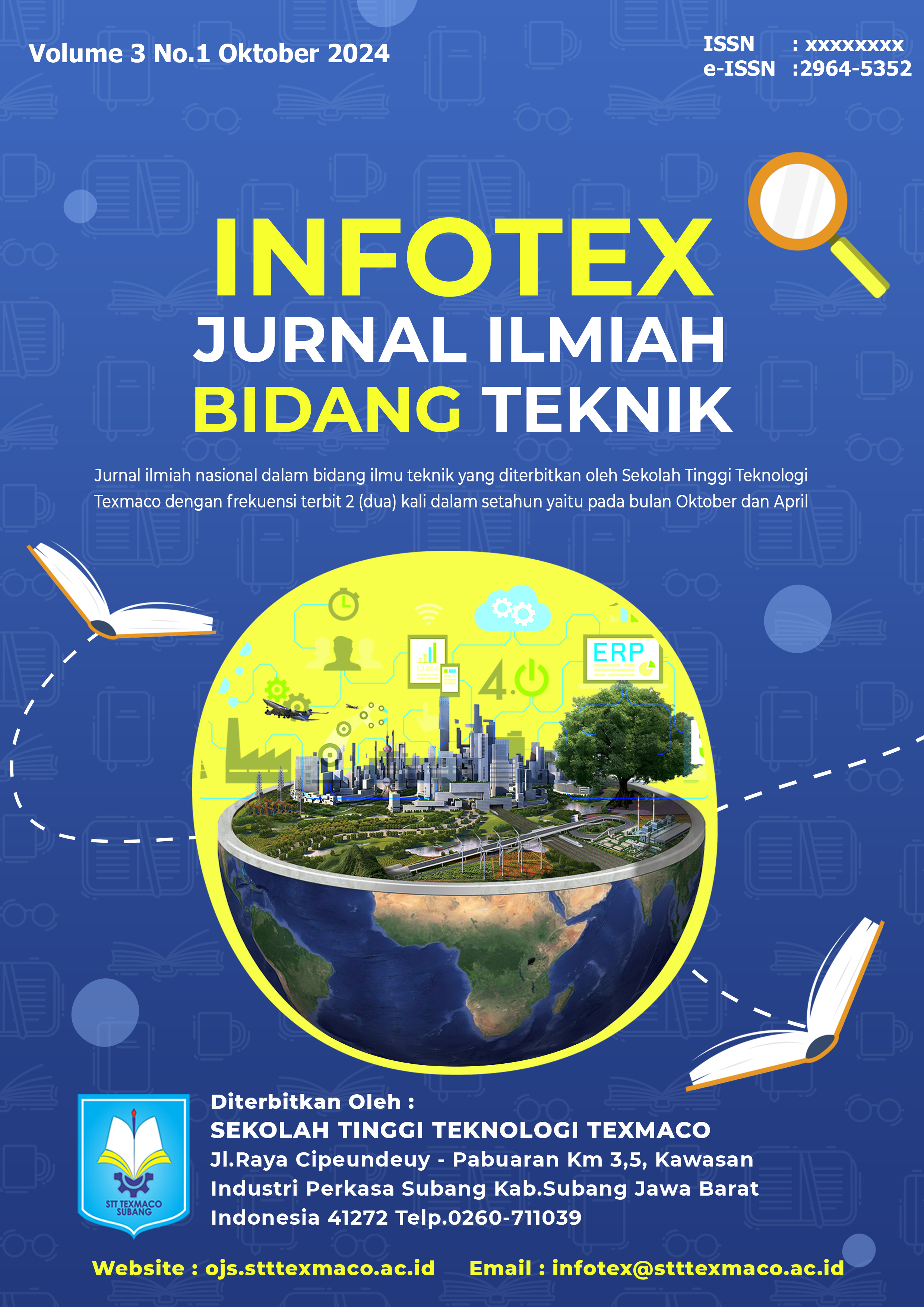Pengaruh Stres Kerja Terhadap Kinerja Karyawan pada Line 02 Assy 32100-K1A-N101 di PT. Piranti Teknik Indonesia
Keywords:
Job Stres, Employee Performance, SPSS 26Abstract
This study aims to determine whether work stress (X) has a significant effect on employee performance (Y) and to determine how much work stress affects employee performance on Line 02 PT. Piranti Teknik Indonesia. Sampling was carried out using the Purposive Sampling technique of 30 people. The data collection technique used was a Questionnaire. The method used to process and analyze data is instrument testing, descriptive statistical analysis testing, classical assumption testing, and hypothesis testing using the SPSS version 26 program. Based on the results of the study, it shows that there is a negative effect between work stress (X) on employee performance (Y) that the t count value is 1.727 and t table 1.701. In accordance with the criteria if t count> t table means H0 is rejected and Ha is accepted, meaning there is a significant negative effect between work stress on employee performance. The negative effect is called a non-directional effect, meaning that the higher the work stress, the lower the employee performance. Based on the results of the determination coefficient test of 0.096 or equal to 9.6%, it means that work stress simultaneously affects performance by 9.6% and is included in the low category. The remaining 90.4% is influenced by other factors that were not studied.
References
[1] T. Wartono, “Pengaruh stres kerja terhadap kinerja karyawan (studi pada karyawan majalah moother and baby),” J. Ilm. Prodi Manaj., vol. 4, no. 2, hal. 41–55, 2017.
[2] E. Sutrisno, “Pengaruh Stres Kerja Terhadap Kinerja Karyawan Di Madrasah Aliyah Negeri Demak,” 2014.
[3] Triyanti, “PENGARUH STRES KERJA TERHADAP KINERJA KARYAWAN PT. BRI SYARIAH KANTOR CABANG S. PARMAN KOTA BENGKULU,” 2018.
[4] Mangkunegara, “No Title,” 2017.
[5] T. H. Handoko, Manajemen, Ed.2. BPFE, 1998. Diakses: 18 Februari 2024. [Daring].
[6] Y. Dianti, “PENGARUH STRES KERJA TERHADAP KINERJA KARYAWAN DI PT. TIGA PILAR GUNUNG BATU TUNGKAL ULU KABUPATEN TANJUNG JABUNG BARAT SKRIPSI,” Angew. Chemie Int. Ed. 6(11), 951–952., hal. 5–24, 2017, [Daring]. Tersedia pada:
[7] Y. . Ahmad, B. . Tewal, dan R. N. Taroreh, “Pengaruh Stres Kerja, Beban Kerja, Dan Lingkungan Kerja Terhadap Kinerja Karyawan Pada Pt. Fif Group Manado,” J. EMBA J. Ris. Ekon. Manajemen, Bisnis dan Akunt., vol. 7, no. 3, hal. 2303–1174, 2019, [Daring]. Tersedia pada:
[8] S. P. Robbins, “No Title,” 2009.
[9] G. Y. A. Hardani Widhiastuti, Rusmalia Dewi, Stress Kerja, 1 ed. Semarang University Press, 2018.
[10] R. M. Sugengriadi, M. M. Arfan, dan N. Sonia, “PERBAIKAN WAKTU BAKU DENGAN MENGGUNAKAN WAKTU JAM HENTI UNTUK MENINGKATKAT OUTPUT DI TEACHING FACTORY,” vol. 2, no. 1, hal. 296–306, 2023.
[11] J. Anak, U. Dini, P. Anak, U. Dini, A. Pendidikan, dan K. Kunci, “PEDAGOGI: Jurnal Anak Usia Dini dan Pendidikan Anak Usia Dini,” vol. 3, hal. 227–239, 2017.
[12] S. P. Dewi, “Pengaruh Pengendalian Internal Dan Gaya Kepemimpinan Terhadap Kinerja Karyawan Spbu Yogyakarta,” J. Chem. Inf. Model., vol. 1, no. 9, hal. 1689–1699, 2017.
[13] N. Almumtazah, N. Azizah, Y. L. Putri, dan D. C. R. Novitasari, “Prediksi Jumlah Mahasiswa Baru Menggunakan Metode Regresi Linier Sederhana,” J. Ilm. Mat. Dan Terap., vol. 18, no. 1, hal. 31–40, 2021,
[14] M Mariani, “Bab III - Metode Penelitian Metode Penelitian,” Metod. Penelit., hal. 32–41, 2022.
[15] T. J. et al James W, Elston D, “analisis linear berganda spss,” Andrew’s Dis. Ski. Clin. Dermatology., hal. 39–49, 2020.
[16] R. R. Anderha dan S. Maskar, “Pengaruh Kemampuan Numerasi Dalam Menyelesaikan Masalah Matematika Terhadap Prestasi Belajar Mahasiswa Pendidikan Matematika [The Effect of Numerical Ability in Solving Mathematical Problems on Learning Achievement of Mathematics Education Students],” J. Ilm. Mat. Realis., vol. 2, no. 1, hal. 1–10, 2021.
Downloads
Published
How to Cite
Issue
Section
License
Copyright (c) 2024 R.M Sugengriadi, Muhammad Mirfak Arfan, Yulita Melati Putri

This work is licensed under a Creative Commons Attribution-ShareAlike 4.0 International License.






